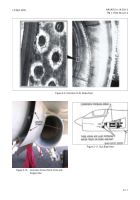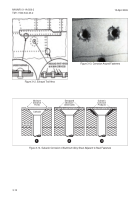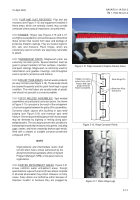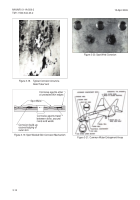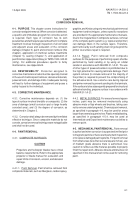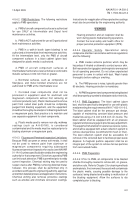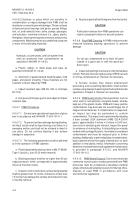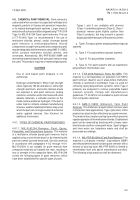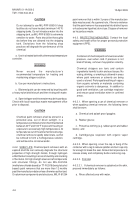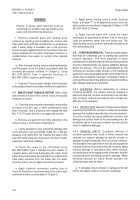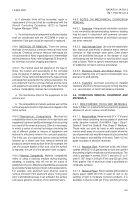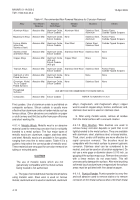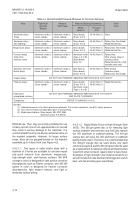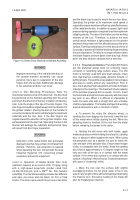TM-1-1500-344-23-2 - Page 81 of 240
4-5
NAVAIR 01-1A-509-2
TM 1-1500-344-23-2
15 April 2009
4-6. CHEMICAL PAINT REMOVAL
. Paint removal is
authorized when corrosion is suspected/verified prior to
magnetic particle or fluorescent penetrant inspection,
or to replace damaged paint systems. Larger areas of
metal aircraft surfaces shall be stripped using TT-R-2918
Type I or MIL-R-81294 Type I paint removers. The use
of TT-R-2918 Type I is recommended if the use of
methylene chloride, phenol, and/or chromate based
paint removers is restricted/prohibited. Aircraft
components (except honeycomb and composite parts)
may be stripped by tank immersion using AMS-C-19853,
which contains methylene chloride, phenol, and
chromates. Alternatively, MIL-PRF-83936 (NMP and
monoethanolamine based) hot tank paint remover may
be used. This product requires a heated stripping tank.
CAUTION
Use of acid based paint strippers is not
authorized.
Hydrogen embrittlement. When high strength
steels (typically 180 ksi and above), some high
strength aluminum, and some stainless steels
are exposed to acid paint removers, plating
solutions, and other acidic chemicals and some
alkaline materials, a cathodic reaction on the
metal surface produces hydrogen. If the part is
under load or contains residual manufacturing
stresses, sudden catastrophic failure may occur
when the part can no longer sustain the internal
and/or applied stresses. See Volume I for
additional information.
4-6.1. TYPES OF CHEMICAL PAINT REMOVERS.
4-6.1.1. MIL-R-81294 Remover, Paint, Epoxy,
Polysulfide, and Polyurethane Systems. This material
is a methylene chloride based paint remover that is
applied using a nylon bristle brush or by immersing the
part into a small covered metal tank. Use this chemical
in accordance with paragraphs 4-6.2 through 4-6.4.
MIL-R-81294 is not suitable for paint removal from
composite materials as it attacks the resin, resulting in
loss of strength in the composite fibers. MIL-R-81294
covers the following types of paint removers, which
have been established for specific types of paint.
NOTE
Types I and II are available with phenols
(Class 1) and without phenols (Class 2). Class 1
products remove paint slightly quicker than
Class 2 products, but may present a greater
disposal problem because of the phenol content.
a. Type I. For epoxy primer and polyurethane topcoat
systems.
b. Type II. For polyurethane topcoat systems.
c. Type III. For polysulfides (sealants).
d. Type IV. For paint systems with an elastomeric
polyurethane intermediate coat.
4-6.1.2. TT-R-2918 Remover, Paint, No HAPs. This
material is a nonhazardous air pollutant (non-HAPs)
paint remover, ideal for use in areas where methylene
chloride is restricted or prohibited. Type I is used for
removing epoxy/polyurethane systems, while Type II
products are designed to remove polysulfide based
(sealant) systems. Comply with manufacturer’s
guidelines. TT-R-2918 is not suitable for paint removal
from composite materials.
4-6.1.3. AMS-C-19853 Immersion Tank Paint
Remover. This material is a liquid carbon remover used
in immersion tank applications. Type I (phenolic) of this
product can also function effectively as a paint remover.
The material has a water seal top layer which prevents
rapid evaporation of the methylene chloride. Dry blistered
paint can be removed by brushing with a heavy nylon
bristle brush and then rinsing with water. Spent stripper
and rinse water are hazardous waste and shall be
processed accordingly.
4-6.1.4. MIL-PRF-83936 Hot Tank Paint Remover. This
material is a di-phase n-methyl- 2-pyrrolidone (NMP)
and ethanolamine based hot tank paint remover with a
mineral oil seal top layer. MIL-PRF-83936 is limited to
intermediate level and above maintenance activities.
The following shop practices shall be observed:
Back to Top

